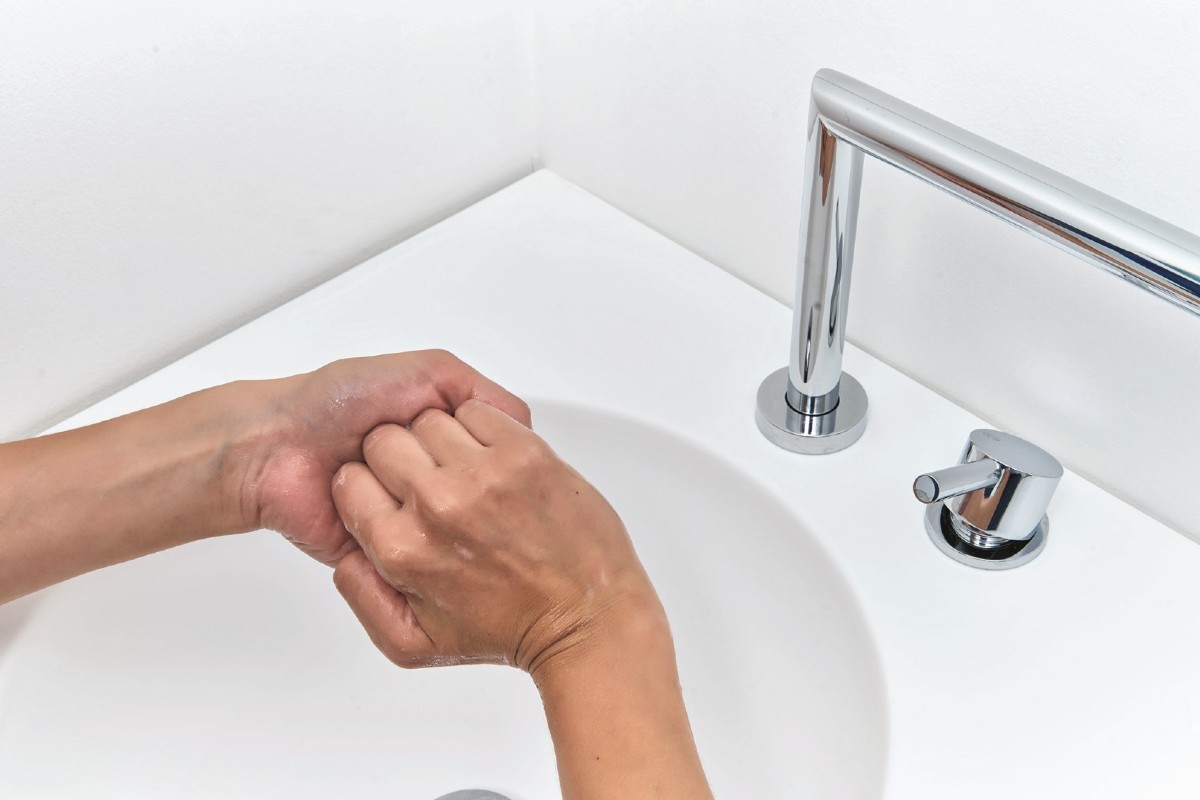
In the dental and health sector in general, poor hand hygiene can lead to the spread of bacterial and viral infections, including the new Coronavirus. This is how and when it is essential to wash them.
In these times of health emergency, doctors and institutions continue to underline the importance of washing hands frequently. As mentioned in a previous article, it is possible to contract Coronavirus infection by carrying your hands to your face after touching a contaminated surface.
Hands are therefore one of the primary ways of spreading pathogenic microorganisms such as Coronavirus, and their hygiene is a fundamental measure to preserve one’s own health and that of others [1].
If this is important in everyday life, it becomes even more relevant for all those who work in the dental sector and in health care in general: the WHO argues that many infections contracted in this area could result from the fact that sometimes hand hygiene is not applied correctly by operators [2].
Hand hygiene has the dual function of protecting both operators and patients: the indication is to wash hands “frequently”, but what are the moments most at risk for health professionals and, in our case, in the dental field?
According to the who, the 5 moments where hand hygiene is essential are the following[3]:
- Before meeting the patient. Within the dental office there is a very frequent turnover of patients. For this reason, the dental team can transfer pathogenic microorganisms by coming into contact with them. Therefore, it is fundamental to wash your hands before any contact with the patient and avoid handshakes to protect them from potential contamination.
- Before performing antiseptic procedures. In most cases within the dental office, the dentist, the assistant or the hygienist comes into contact with the patient’s mucous membranes which, whether intact or injured, can act as portals of entrance for pathogenic microorganisms. The aim is to protect the patient from infection by avoiding that pathogens pass from the operator’s hands to the patient’s body via the mucous membranes.
- After being exposed to bodily fluids. In the case of a simple oral cavity inspection or more invasive surgery, the dental team is always exposed to body fluids such as blood and saliva, which are potential vehicles of infection spread. Therefore, the team should protect themselves by adopting proper hand hygiene in addition to the appropriate use of various personal protective equipment (PPE) such as gloves, gown, mask and goggles.
- After contact with the patient. Whatever the level of invasiveness of the intervention on the patient, there is the possibility that a microorganism was transferred to the dentist, the hygienist or the assistant, so they should wash their hands to protect their health at the end of each appointment.
- After approaching the surfaces that came into contact with the patient. An aerosol composed of blood and saliva is generated whether during a hygiene session or more invasive interventions in dental offices and it can be deposited on the chair, lamp and in general on all surfaces of inanimate objects that surround the patient. Consequently, the person who goes to treat these surfaces should adopt a proper disinfection protocol followed by adequate hand hygiene to protect their health, that of their colleagues and future patients.
How is a proper hand hygiene carried out and what kind of products are used?
Hand hygiene can be performed with different methods and products depending on the task to be accomplished. The main techniques that concern anyone in contact with a patient are the following.
Social or hygienic washing: it aims to remove visible dirt and remove pathogenic germs, with the help of water and soap detergent, possibly liquid. It is necessary to wash hands when they are visibly contaminated with organic material (blood or other biological liquids), after use of restrooms and before handling medical devices or medicines. Social washing should take between 40 and 60 seconds. For a proper performance it is necessary:
- open the tap with your hand, elbow or foot
- evenly wet hands and wrists with warm water
- apply one dose of soap to the palm of the hand
- after soaping your hands and wrists for at least 15 seconds, rinse them thoroughly.
- dry with disposable towels in cotton or paper towels
- close the water tap with your elbow or a towel flap.
Antiseptic washing: it aims to eliminate pathogenic germs present on the hands through the use of water and detergents containing an antiseptic agent (the most used are chlorhexidine gluconate, iodophors and triclosan). This type of washing is also suitable before handling medical devices or drugs and must last from 40 to 60 seconds.
Alcoholic friction: it aims to eliminate pathogenic germs by solutions containing between 60-80% alcohol, associated with emollient and moisturising substances able to protect the skin. The products can be in gel, liquid or foam and should not be used on injured or injured skin; they evaporate after use, so there is no need to use water and dry hands. The friction should last a total of 30-40 seconds until completely dry. The simultaneous use of alcohol-based frictions and antiseptic soap should be avoided. It is indicated in the following situations:
- before and after direct contact with the patient
- after removal of non-sterile gloves
- after contact with body fluids and secretions, mucous membranes or not intact skin
- when, while assisting the same patient, you go from a contaminated body site to a clean one
- after contact with objects in the immediate proximity of the patient.
In addition to the above-mentioned cases, we would like to make a quick statement about the surgical procedures. Before performing them, it is recommended to follow even stricter guidelines than those seen so far: in this case it is necessary to perform a surgical wash following an established procedure or a surgical friction with alcohol-based formulations.
Health care workers and dental team members also use personal protective equipment (PPE): in the specific case of the hands, gloves. At this point, the reader will ask himself a question.
Are gloves an alternative to hand washing?[5]
The answer is NO! Hand hygiene should be applied when appropriate, as seen above, regardless of the use of gloves. They can be contaminated: they should be discarded after each use and then wash your hands properly.
What are the procedures to follow to wash your hands properly?
Hand hygiene with antiseptic hydroalcoholic gel [6]:
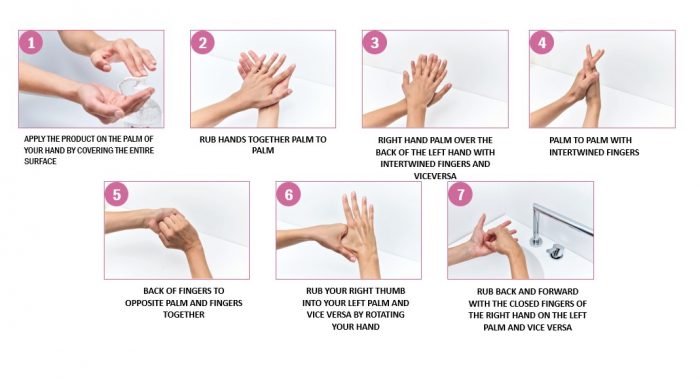
Once the gel has completely evaporated, the hands are sanitized.
Soap and water washing [7]:
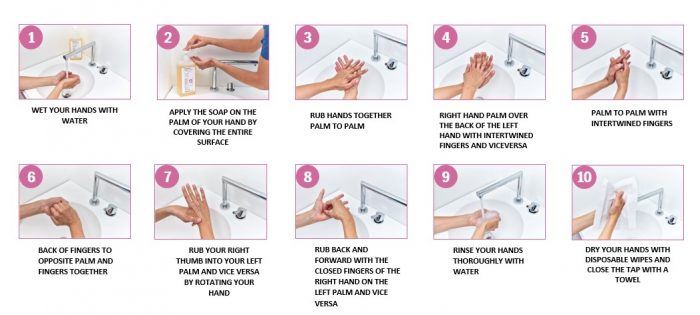
Zhermack offers a wide range of products for the disinfection of the dental office and for hand hygiene and cleaning. The Zeta Hygiene line, which has been present in the disinfection sector for more than ten years, makes the work of professionals safe because it has been tested according to the latest European standards.
For more information, click here and discover the complete range.
Sources
[1] World Health Organization, WHO Guidelines on Hand Hygiene in Health Care, 2009; 24
[2] World Health Organization, WHO Guidelines on Hand Hygiene in Health Care, 2009; 14
[3] World Health Organization, WHO Guidelines on Hand Hygiene in Health Care, 2009; 123
[4] Ministero della salute Italiano, La salute nelle tue mani: http://www.salute.gov.it/portale/news/p3_2_3_1_1.jsp?lingua=italiano&menu=dossier&p=dadossier&id=21
[5] World Health Organization, WHO Guidelines on Hand Hygiene in Health Care, 2009; 129
[6] World Health Organization, WHO Guidelines on Hand Hygiene in Health Care, 2009; 155
[7] World Health Organization, WHO Guidelines on Hand Hygiene in Health Care, 2009; 156
English PDF “WHO Guidelines on Hand Hygiene in Health Care”: https://www.who.int/gpsc/5may/tools/9789241597906/en/
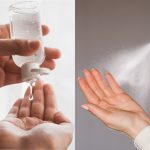


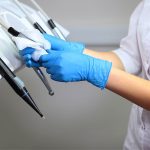

 Zhermack SpA has been one of the most important producers and international distributors of alginates, gypsums and silicone compounds for the dental sector for over 40 years. It has also developed solutions for the industrial and wellbeing sectors.
Zhermack SpA - Via Bovazecchino, 100 - 45021 Badia Polesine (RO), Italy.
Zhermack SpA has been one of the most important producers and international distributors of alginates, gypsums and silicone compounds for the dental sector for over 40 years. It has also developed solutions for the industrial and wellbeing sectors.
Zhermack SpA - Via Bovazecchino, 100 - 45021 Badia Polesine (RO), Italy.


